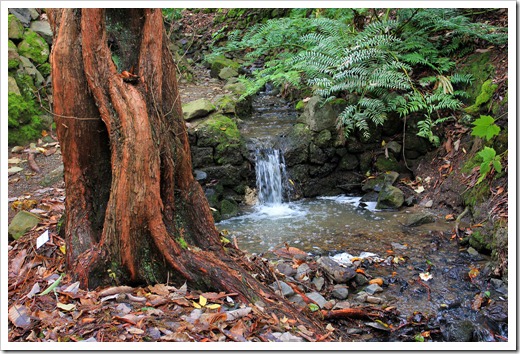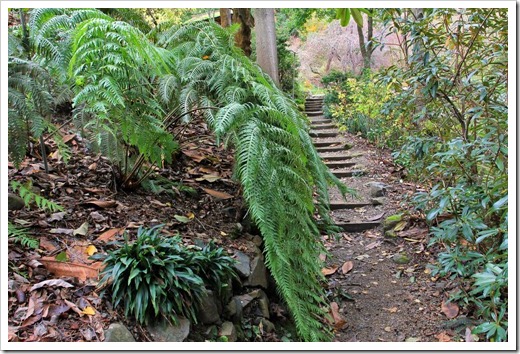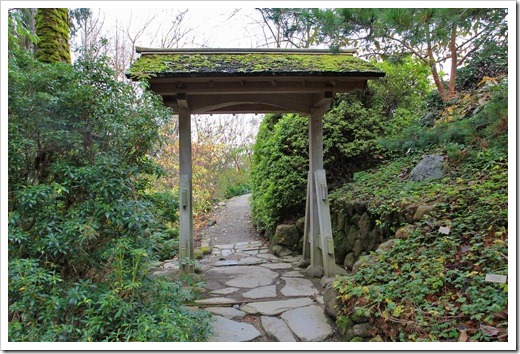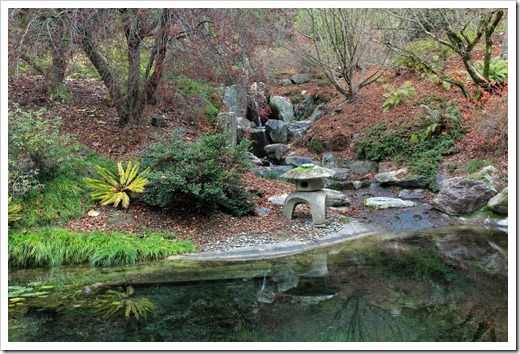UC Botanical Garden—Asian Collection
On my recent visit to the UC Botanical Garden (UCBG) in Berkeley, I first strolled through the Southern African Collection where many aloes were blooming and then through the New World Desert Collection with its myriad agaves, yuccas, cacti, and terrestrial bromeliads. After so much spikiness, I was ready for something more gentle. Fortunately, I didn’t have far to go because the Asian Collection borders both the Southern African and New World Desert Collection.
The contrast couldn’t have been greater. One of the first sights I saw when entering this verdant forested environment, was this:
Dawn redwood (Metasequoia glyptostroboides) along Strawberry Creek in the Asian Collection
According to the UCBG web site:
The [Asian Collection] includes much of the Asian continent. The majority of this collection comes from temperate climate and subtropical areas of China, Japan, Korea, Siberia, the Kamchatka Peninsula, and the Himalayas.
The topography within this area accommodates plants from incredibly diverse wild habitats. Sunny, relatively dry areas, contrast with damp, shaded places, which are often ten degrees cooler than the surrounding Garden. Temperate climate plants from across the Asian continent thrive here.
Many favorite garden plants from Asia were introduced to Western horticulture by late 19th- and early 20th-century collecting expeditions. These include magnolias, rhododendrons, camellias, peonies, maples, and bamboos.
The most impressive tree in this section has got to be the dawn redwood (Metasequoia glyptostroboides). Long thought to be extinct, Metasequoia glyptostroboides was rediscovered in China in 1943 and described as a new species in 1948. In the same year, Harvard University sent an expedition to China to collect seeds. The trees at the UCBG were grown from those seeds.
Dawn redwood (Metasequoia glyptostroboides)
Dawn redwood (Metasequoia glyptostroboides)…
…with ginger lily (Hedychium spicatum)
Tree rhododendron (Rhododendron grande)
Mule’s foot fern (Angiopteris lygodifolia)
Chain fern (Woodwardia unigemmata)
Gate near Japanese Pool
While small, the Japanese Pool with its gentle waterfall and stone lantern is a peaceful setting much loved by visitors. The entire display had originally been used in the 1939 San Francisco World’s Fair and was donated to the UCBG afterwards.
Japanese Pool
Another stone lantern near the Japanese pool
Japanese forest grass (Hakonechloa macra) in all its fall glory
Further along the trail I came across several camellias in full bloom. What a sight for sore eyes in the middle of winter!
Camellia (Camellia japonica) in bloom
Camellia blossom
Blooming camellia behind a dawn redwood (Metasequoia glyptostroboides) on the other side of Strawberry Creek
Unlike the San Francisco Botanical Garden, the UCBG doesn’t have much in the way of bamboo but there is a nicely maintained stand of Phyllostachys vivax at the eastern edge of the Asian Collection.
Chinese timber bamboo (Phyllostachys vivax)
Phyllostachys vivax culm
Right across from this stand of timber bamboo is the largest and most contorted California buckeye (Aesculus californica) I have ever seen. A small sign indicates that this tree was the “first citizen along an 1890 cow path.”
Chinese timber bamboo (Phyllostachys vivax) on the left, California buckeye (Aesculus californica) on the right
California buckeye (Aesculus californica)
The final sight of interest was a Japanese rowan or mountain ash (Sorbus commixta). It’s related to the American mountain ash (Sorbus americana), a common sight in the Eastern U.S. and often planted as a landscape tree in the Western U.S. This specimen was small, more shrub than tree, and still had some of its striking fall foliage.
Japanese rowan or mountain ash (Sorbus commixta)
I hadn’t intended to visit the Asian Collection on this trip, but I’m very glad I took the time. Walking through this peaceful part of the garden was one of the highlights of my visit.
Related posts:





















Did you get any wide shots of the dawn redwood? I'd like to see its form and compare it to the ones here (at MOBOT). I'd really love to plant one of those in my front yard, but the trunk gets soooo wide eventually. Maybe I shouldn't worry about that now though.
ReplyDeleteLove the California buckeye too!
Alan, I just emailed you a few photos. I think a dawn redwood would look fantastic in your front yard. We're thinking of planting one at my in-laws' house in the spring.
DeleteThat buckeye sure is unique. I've never seen one this large and with this much character.
Great post Gerhard! That is so cool about the Redwood! Beautiful trunk.
ReplyDeleteI think a planter filled with succulents would look awesome against that trunk!
DeleteI just love how you capture all the forms and textures. Thanks for sharing Gerhard.
ReplyDeleteThank you, Laura! I really appreciate your kind words. I'm naturally attacted to textures and try to capture them as best as I can.
DeleteAround the world in one garden! I love the stark contrasts between each region and yet they are side by side in one garden. I like them all but if I have to choose a favourite, it has to be the World Desert Collection :)
ReplyDeletenice
ReplyDelete